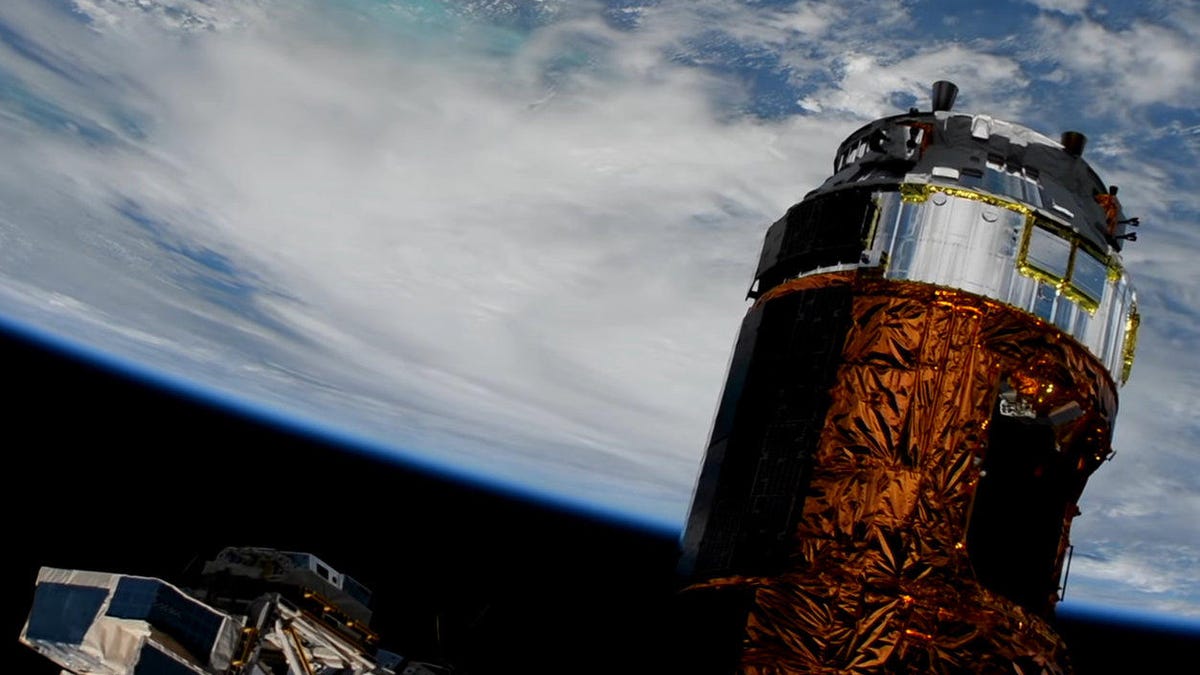Hurricane Michael menaces Florida in startling space views
Satellites and the space station look down on a "potentially catastrophic" monster storm set to rock the state.
Hurricane Michael has ramped up in intensity and turned it into a Category 4 monstrosity.
While residents and first responders prepare for the hurricane to make landfall Wednesday along the Gulf Coast of the Florida Panhandle, satellites and the International Space Station are tracking its progress from above.
NASA posted a video from the ISS on Tuesday from an altitude of 255 miles (410 kilometers). It showed an upside-down view of Michael as it moved across the Gulf of Mexico.
The National Hurricane Center called the storm "potentially catastrophic" in an advisory issued Wednesday, hours ahead of an anticipated landfall later in the day. The message warns of a life-threatening storm surge, hurricane force winds and heavy rainfall.
The National Oceanic and Atmospheric Administration's Goes-East satellite captured a loop of Michael's eye during sunrise. It shows the churning clouds around the center of the storm.
The sun is rising over the eye of #HurricaneMichael, as seen by #GOESEast. The @NHC_Atlantic warns that some additional strengthening is possible before the Cat. 4 storm makes landfall. Follow Michael on our Atlantic hurricane tracker: https://t.co/4TUMYLzDG9 pic.twitter.com/UD6FG6Hopb
— NOAA Satellites (@NOAASatellites) October 10, 2018
The @NOAASatellites Twitter account also posted a night-time view from the same satellite. This look highlights the storm's size and reach.
#HurricaneMichael, seen here by #GOESEast, strengthened to a Cat. 4 storm and is now approaching the Florida Panhandle. The @NHC_Atlantic warns that life-threatening storm surge, hurricane-force winds and heavy rainfall are imminent. Latest: https://t.co/duUUaOsfc5 pic.twitter.com/sOMwQeZGSl
— NOAA Satellites (@NOAASatellites) October 10, 2018
NOAA's Goes-East satellite viewed the storm in infrared, which gives it a psychedelic look but also emphasizes the hurricane's bands and powerful center.
#HurricaneMichael has strengthened to a major Cat. 3 storm with maximum sustained winds of 120 mph. This #GOESEast imagery shows the hurricane less than 300 miles south of Panama City, Florida. Latest: https://t.co/KYMUJadxB6 pic.twitter.com/EYHHXNxXlH
— NOAA Satellites (@NOAASatellites) October 9, 2018
Space views from astronauts, ISS cameras and satellites give a wide perspective on dangerous storms like Hurricane Michael and Hurricane Florence, which battered the Carolinas in September.
Florida Gov. Rick Scott called for residents in Michael's path along the coast to seek refuge immediately.


